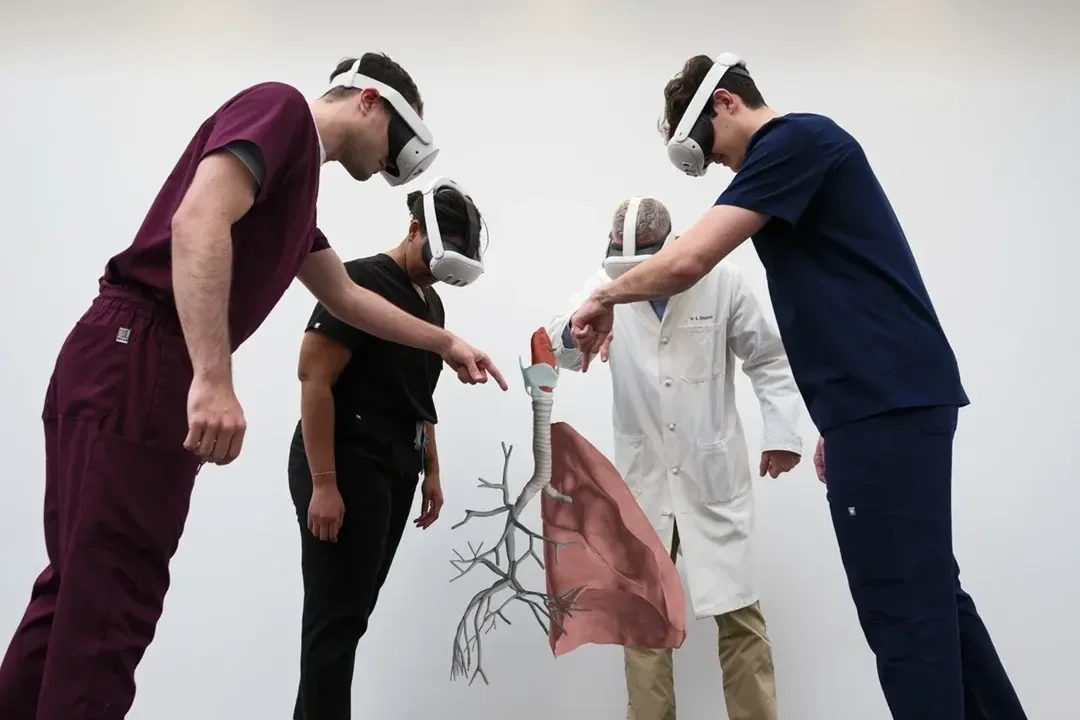A New School Year, A New Frontier: Shaping the Future of Anatomy Learning
TL;DR: This school year, educators can meet anatomy teaching challenges with flexible curricula, clarity-driven 3D anatomy software, and virtual anatomy labs.
As a new academic year begins, medical and health sciences educators are once again balancing enormous responsibilities: making the most of limited resources, aligning curricula with evolving clinical demands, and engaging students who expect interactive, technology-enabled experiences.
Anatomy education is at an inflection point. Traditional dissection remains foundational, but it can’t always meet the scale, accessibility, or integration demands of today’s programs. Digital tools such as 3D anatomy software and immersive platforms offer new possibilities, but too often they’re fragmented or focused more on realism than on actual learning outcomes.
This year offers an opportunity for educators to rethink how anatomy is taught, and to embrace technology not as a replacement for tradition, but as a way to elevate and expand it.
Flexible Curriculum Integration: Teaching Without Boundaries
No two programs are identical, and no two student cohorts learn in the same way. That’s why educators increasingly need anatomy software that adapts to curriculum goals instead of forcing the curriculum into someone else’s framework.
One session, many dimensions: Imagine connecting anatomy, physiology, histology, and even clinical cases in a single immersive learning experience, without having to toggle between multiple applications.
Your cases, your way: Faculty want to incorporate their own scenarios, images, and content to ensure lessons remain clinically relevant and aligned with institutional priorities.
Adaptable formats: Whether in a lecture hall, a small-group lab, or a student’s take-home study session, the learning experience should flex without losing fidelity.
This flexibility empowers educators to align immersive learning directly with teaching objectives, helping students connect knowledge across disciplines and accelerate clinical reasoning.
Comprehensive Anatomical Visibility: Clarity Where Students Need It Most
The real promise of educational technology isn’t just realism – it’s clarity. Too often, digital models designed to replicate detail of the human body overwhelm learners with complexity. The need is not for more lifelike, but for more learnable.
Precision without distraction: High-fidelity models should highlight key structures in ways that make them memorable and accessible.
Seeing the unseen: Transparent “hollow” organ views and branching vasculature let students explore anatomy that would otherwise require dissection or imaging slices.
Learning for retention: Color coding, context, and clarity reduce cognitive load, helping students grasp relationships and retain knowledge over time.
When anatomy is presented for comprehension rather than replication, students are more likely to achieve the deep understanding educators are striving for. A virtual anatomy lab can make this exploration accessible to more students, wherever they are.
Academic Rigor: Built With and For Educators
Technology that succeeds in education is rarely born in a vacuum. The most effective tools are those developed in close partnership with academic programs, tested under real conditions, and continuously refined based on feedback.
Grounded in research: Evidence from classroom studies shows how immersive visualization can reduce cognitive load, improve retention, and increase student confidence.
Proven in practice: Early-adopting institutions have already demonstrated how digital anatomy can expand access, modernize labs, and support new teaching models.
Shaped by community: Tools evolve best when guided by the collective input of faculty, curriculum leaders, and students.
For educators evaluating innovation, credibility matters. When new approaches are anchored in evidence and trusted by peer institutions, they carry the confidence needed to implement real change.
Looking Ahead: The Year of Possibility
This fall, programs face pressures from enrollment growth, space constraints, financial limitations, and rising student expectations. Yet within these challenges lies extraordinary possibility: the chance to reshape anatomy education into something more flexible, more engaging, and more effective than ever before.
The future of anatomy education will be defined not by replacing tradition, but by complementing it. Technology is no longer just a supplement—it’s a partner in creating learning experiences that are both rigorous and inspiring. Tools like anatomy physiology VR and anatomy AR apps are already helping programs expand access while preserving academic rigor.
The future of anatomy education is immersive, interactive, and limitless. With HoloAnatomy® on the .NEXT™ platform, educators and students can step out of the textbook, beyond the cadaver, and into what’s next: a three-dimensional, clarity-driven way of learning that connects tradition with transformation.
As this academic year begins, the question isn’t whether technology will reshape anatomy education, but how quickly we choose to step into the .NEXT dimension of learning.

